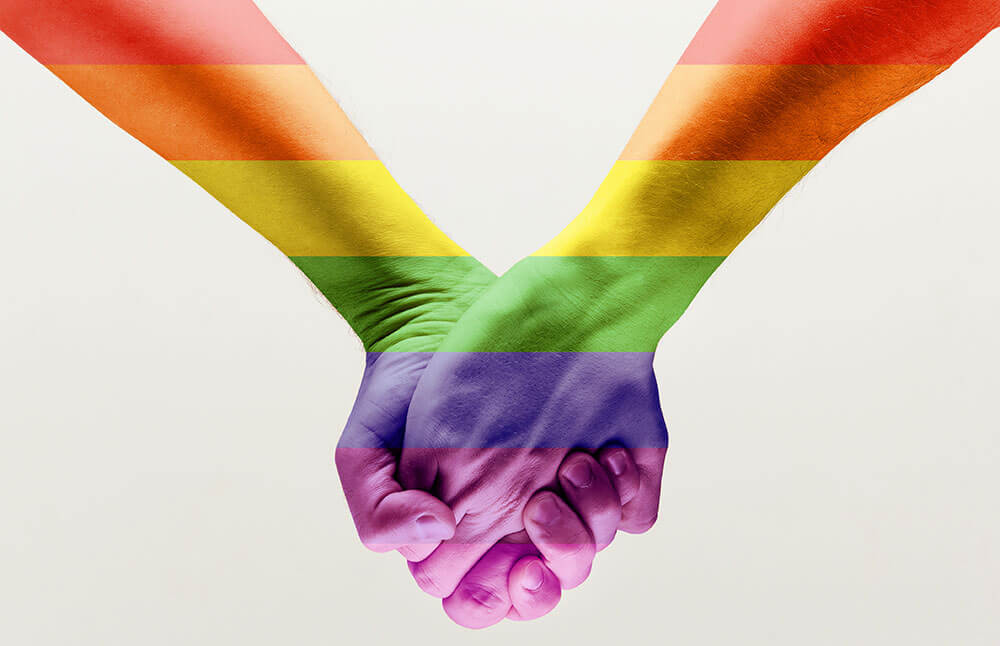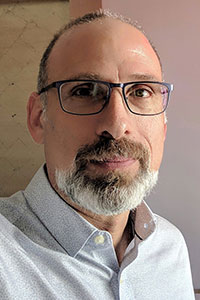
HospitableMe helps destination marketing organizations and their partners address LGBTQ issues.
More than 25 years ago, Billy Kolber launched Out & About, the first travel magazine for the LGBTQ community in the United States. The magazine shut down in 2004, but was reborn seven years ago as ManAboutWorld, a magazine built exclusively for mobile users.
“That presented a real challenge for us at the beginning,” Kolber said. ManAboutWorld’s advertising clients didn’t have full-screen ads that could be adapted for mobile, and so the publication started bundling in other services with their ad buys. Before long, Kolber and his business partner, Ed Salvato, realized that their clients were far more interested in these services than in the ads themselves.
“We had been doing mostly strategy for our clients and we had recommended that one of them do sensitivity training,” Kolber said. “Not because they had problems, but because we felt there was a PR opportunity for them. Which it did turn out to be; they ended up getting a lot of business just by telling people that they had done this training. It was really unique in the industry.”
And so HospitableMe, a focused LGBTQ strategy, marketing, and training service for the tourism and hospitality industry was created — a resource for anyone from C-suite executives to consumer-facing hospitality professionals who “had never really had a professional conversation about who LGBTQ people are, how we’re different, the things that we’re particularly sensitive to when we travel,” Kolber said, including “the ways that we are sometimes ignored or mistreated, often unintentionally. Today, the bulk of our business is in training and education around diversity and inclusion, primarily through the lens of LGBTQ, but really focuses on addressing clients as individuals — not making decisions or assumptions about them based on their aspects of diversity.”
Kolber recently spoke with Convene about how HospitableMe is helping destination marketing organizations and their partners address LGBTQ issues.
Are there particular topics that clients frequently ask you about?
Yeah, I think there are three primary things that come up a lot. The first is around gender diversity. So, most people think of gender as being something very simple, just male or female, one or the other. In reality, it’s much more complicated than that. Eleven countries issue passports with gender neutral or third-gender markers. In February of this year, the International Air Transport Association and Airlines for America came up with guidelines for the acceptance of non-binary passenger IDs. It went pretty much unnoticed in the mainstream industry and [there was] very little coverage of it in the travel industry, even. And then on March 22, United Airlines became the first airline to actually roll out a reservation system update that accommodates four different gender options.

Billy Kolber
That there are four different gender options on legal travel documents is mind-blowing to many audiences. So, a lot of our training around gender diversity in its simplest form basically means that if their passport says “X” or “U,” you enter “X” or “U” in the system. But understanding how there are people who aren’t male or female and what their challenges are when they travel is a much more nuanced conversation. We do a little bit of history, a little bit of sociology, a little bit of biology, a little bit of Ripley’s Believe It or Not, to kind of bring the audience around to the idea that people come in more than just two genders.
Then gender, like sexual orientation, like relationship status — our industry is so heavily gendered, so pervasively built on this archetype of heterosexual couples, primarily white, American, British, and German, traveling around the world. So much of our industry is built around that archetype, but that’s not really what travelers look like today and yet much of our industry is still stuck in that. So, we train around things that happen to LGBTQ people on a regular basis, but the goal of our training is to help people remove preconceptions about people from the decisions they make about them in order to provide more personalized authentic service to everyone. I would say those are the two things that come up a lot.
And then the third thing is that most of our industry has treated LGBTQ as a niche market. And the demographics around the issues that matter to LGBTQ people are shifting really, really rapidly. Surveys about our community have typically asked, “Do you identify as gay, lesbian, transgender?” And [trend forecasting agency] J. Walter Thompson Innovation Group did a survey in 2016 that kind of flipped that around and didn’t ask people to put themselves in a box, but to put themselves on a scale. Fifty-two percent of Gen Z identify as something other than 100-percent straight, and 54 percent of Gen Z and millennials know somebody who uses a pronoun other than “he” or “she.” When you’re looking to put heads in beds, you may be marketing to gay men or you may be marketing to lesbians, but it’s a very broad grouping of multiple identities and communities.
What are some examples of opportunities with LGBTQ travelers that destinations have trouble identifying?
In general, the opportunity is gaining business from these communities who are so frequently ignored or unaddressed. The global opportunities are a greater share of LGBTQ travelers, and that business comes in many different ways. In the wedding business, it’s around updating your marketing and communications material so that they are as welcoming to same-sex couples as they are to heterosexual couples.
In the meetings business [on the venue side], it is being prepared for RFPs that request gender-neutral bathroom facilities. Understanding what that means and how to provide that for small and large groups, which again is not an opportunity that is limited to a conference for transgender people. Any time you have a large group of people meeting, there will be transgender and non-gender, non-binary, and gender non-conforming people at that meeting.
RELATED: 10 Best Practices to Make LGBTQ+ Attendees Feel Welcome
Biologically, it’s estimated that non-binary people are as common as redheads. Granted, many of those people identify on a binary. There are many different ways that you can be biologically not distinctively male or female, and yet still identify as male or female. But the incidence of non-binary humans is much greater than people imagine [especially] when you look at organizations that are holding meetings and conventions that are trying to kind of reinvent themselves for a younger audience that is more experiential, that is more cause-driven.
These are critical conversations for those organizations, so helping them understand what we’re talking about and what the best practices in the industry are makes them much more available for closing more business. That’s in the broadest sense. In a micro sense, our services include destination audits where we go in to a destination and report on a number of qualitative and quantitative measures to give them a sense of how well they’re doing and what their opportunities and challenges might be. We do a lot of content marketing for destinations and brands, creating inclusive content that they can use to promote themselves to new clients and welcome visitors to their destination or company. We do market planning, we do influencer events, kind of a full range of marketing services for destinations and brands, but we’re not alone in that space. There are a lot of people in that space, but what’s most distinctive about us is the training and education piece and our strategic advice that’s kind of rooted in that training and education.
A frequent criticism of diversity and inclusion training is that it only covers surface issues and does not help the systemic problems within an organization. How do you combat that, for instance, when it comes to helping DMOs not only transform their brand, but share that messaging with their partners?
I think one of the things that really distinguishes us is that we don’t come from HR. A lot of the training that exists around diversity is compliance- based and is superficial because it’s basically designed to say, “Do this, don’t do that.” We start much further back and entertain a much deeper discussion that focuses on understanding diversity in general, gender and sexual orientation specifically, and looking at how those issues impact the way people travel, the way people make decisions about travel. Every time we train a group, we get questions, and examples of situations that they need help figuring out — “Did I do the right thing? Could I have done something better?” There are lots of specifics that we end up addressing, but in order to avoid training that is superficial, I think we really have to get to the root of how we’re different and how that’s relevant to travel in particular and what are the skills, the perspectives, and the skills that you need to acquire in order to feel comfortable engaging with this marketplace and these consumers.
RELATED: A Not-So-Welcoming World for LGBTQ Travelers
We work with a lot of DMOs, but we also work with hotels and other partners of the DMO, so we’re trained across a wider latitude in the tourism space in that destination. Typically, when we work with DMOs, we’re not just training them, but providing programs for their constituencies. I think a lot of them don’t necessarily recognize the systemic issues within their own organizations. They see it in their service providers, their membership base. We address them both. One of the discussions that I’ve been involved in within our industry is the diversity and inclusion within the organizations themselves. A number of DMOs are committed to building more diverse and inclusive workforces within their own organizations. And there’s no best practice better than that — when your organization reflects the diversity of your client makeup, you are best suited to serve your clients.
When you work with destinations, how do you go about training employees in different roles?
Our work is divided into three different categories: hotel operations people, which tends to be a lot of general managers and front desk people; hotel sales people — so we do a conversation around sales and marketing that’s specific to those roles; and then for DMOs we often do attractions and retail — people who work in coffee shops and retail stores. We try to divide people so that they’re experienced with the marketplaces relatively similarly, and their needs for understanding best practices are aligned. We typically group people by their roles and responsibilities because they experience a different version of travelers. What a housekeeper needs to know about LGBTQ people is different than what a bartender might need to know.
Casey Gale is an associate editor at Convene.
